- Home
- Gore Vidal
The Second American Revolution and Other Essays 1976--1982
The Second American Revolution and Other Essays 1976--1982 Read online
First Vintage Books Edition, April 1983
Copyright © 1976, 1977, 1978, 1979, 1980, 1981, 1982 by Gore Vidal
All rights reserved under International and Pan-American Copyright Conventions. Published in the United States by Random House, Inc., New York, and simultaneously in Canada by Random House of Canada
Limited, Toronto. Originally published by Random House, Inc. in 1982. Most of the essays have been previously published in the following publications: Esquire, Los Angeles Times, The New York Review of Books, and Playboy. Grateful acknowledgment is made to the following for permission to reprint previously published material: The Nation: “Some Jews and the Gays” by Gore Vidal, from The Nation, November 14, 1981. Reprinted by permission. New Statesman: “He Dwells with Beauty” by Gore Vidal, from New Statesman, March 17, 1978. Reprinted by permission.
Library of Congress in Publication Data
Vidal, Gore, 1925-
The second American revolution and other essays
(1976-1982)
I. Title.
PS3543.126S28 1983 814′.54 82-40425
ISBN 0-394-71 379-6 (pbk.)
Ebook ISBN 9780525565826
v5.3.2
a
For Grace Zaring Stone
Contents
Cover
Title Page
Copyright
Dedication
F. Scott Fitzgerald’s Case
Edmund Wilson: This Critic and This Gin and These Shoes
Christopher Isherwood’s Kind
On Prettiness
The Oz Books
Lessing’s Science Fiction
Sciascia’s Italy
V. S. Pritchett as “Critic”
Thomas Love Peacock: The Novel of Ideas
Who Makes the Movies?
Sex Is Politics
Pink Triangle and Yellow Star
How to Find God and Make Money
Rich Kids
Theodore Roosevelt: An American Sissy
The State of the Union Revisited (1980)
The Real Two-Party System
The Second American Revolution
A Note on Abraham Lincoln
About the Author
F. Scott Fitzgerald’s Case
Francis Scott Fitzgerald was born 1896 in St. Paul, Minnesota; he died 1940 in Hollywood, California, at 1443 North Hayworth Avenue, within walking distance of Schwab’s drugstore, then as now a meeting place for those on their way up or down in what is still known in that part of the world as The Industry, elsewhere as the movies.
Between 1920 and 1940, Fitzgerald published four novels, 160 short stories, some fragments of autobiography. He worked on a dozen film scripts. He also wrote several thousand letters, keeping carbon copies of the ones most apt to present posterity with his side of a number of matters that he thought important. Although very little of what Fitzgerald wrote has any great value as literature, his sad life continues to provide not only English Departments but the movies with a Cautionary Tale of the first magnitude. Needless to say, Scott Fitzgerald is now a major academic industry. Currently, there are two new models in the bookstores, each edited by Professor Matthew J. Bruccoli. The Notebooks of F. Scott Fitzgerald contains all 2,078 notebook entries while Correspondence of F. Scott Fitzgerald includes letters to as well as from Fitzgerald.
A quick re-cap of the Fitzgerald career: in 1920, he published This Side of Paradise and married the handsome Zelda Sayre. In 1921, they set out for the territory—in those days, Europe. But the Fitzgeralds’ Europe was hardly the Europe of James’s “The Passionate Pilgrim.” The Fitzgeralds never got around to seeing the sights because, as Jazz Age celebrities, they were the sights. They wanted to have a good time and a good time was had by all for a short time. Then things fell apart. Crash of ’29. Zelda’s madness. Scott’s alcoholism. As Zelda went from one expensive clinique to another, money was in short supply. Scott’s third and best novel, The Great Gatsby (1925), did not make money. Novel number four did not come easily. Back to America in 1931: Baltimore, Wilmington. Fitzgerald made two trips to Hollywood where he wrote movie scripts for money; he made the money but no movies.
The relative failure of Tender Is the Night (1934) came at a time when Fitzgerald’s short stories no longer commanded the sort of magazine prices that had made the living easy in the Twenties. After a good deal of maneuvering, Fitzgerald wangled a six-month contract as a staff writer for MGM. At $1,000 a week, he was one of the highest paid movie writers. From 1937 to 1940, Fitzgerald wrote movies in order to pay his debts; to pay for Zelda’s sanitarium and for his daughter’s school; to buy time in which to write a novel. Despite a dying heart, he did pretty much what he set out to do.
In a sense, Fitzgerald’s final days are quite as heroic as those of General Grant, as described in General Grant’s Last Stand, a book that the Scribner’s editor, Maxwell Perkins, rather tactlessly sent Fitzgerald after reading the three sad autobiographical sketches in Esquire (reprinted, posthumously, by Edmund Wilson in The Crack-Up).
“I enjoyed reading General Grant’s Last Stand,” Fitzgerald replied with considerable dignity under the circumstances, “and was conscious of your particular reasons for sending it to me. It is needless to compare the difference in force of character between myself and General Grant, the number of words he could write in a year” (while dying of cancer, dead broke), “and the absolutely virgin field which he exploited with the experiences of a four-year life under the most dramatic of circumstances.” It was also needless to mention that despite a failed presidency, a personal bankruptcy, a history of alcoholism, Grant had had such supreme victories as Shiloh, Vicksburg, Appomattox, while Fitzgerald had had only one—The Great Gatsby, a small but perfect operation comparable, say, to Grant’s investiture of Fort Donelson.
At the time of Fitzgerald’s death in 1940, he was already something of a period-piece, a relic of the Jazz Age, of flappers and bathtub gin. The last decade of Fitzgerald’s life began with the Depression and ended with World War II; midway through the Thirties, the Spanish Civil War politicized most of the new writers, and many of the old. Predictably, Ernest Hemingway rode out the storm, going triumphantly from the bad play The Fifth Column to the bad novel For Whom the Bell Tolls (Fitzgerald’s comment: “a thoroughly superficial book with all the profundity of Rebecca”). Nevertheless, with characteristic panache, the great careerist managed to keep himself atop the heap at whose roomy bottom Fitzgerald had now taken up permanent residence.
But, sufficiently dramatized, failure has its delights, as Fitzgerald demonstrated in those autobiographical pieces which so outraged his old friend, John Dos Passos, who wrote: “Christ, man, how do you find time in the middle of the general conflagration to worry about all that stuff?” But all that stuff was all that Fitzgerald ever had to deal with and he continued to confront his own private conflagration until it consumed him, while eating chocolate on a winter’s day just off Sunset Boulevard.
At Princeton, Fitzgerald and Edmund Wilson were friends; they continued to be friends to the end even though Wilson was an intellectual of the most rigorous sort while Fitzgerald was barely literate. Yet they must have had something in common beyond shared youth, time, place, and I suspect that that something was the sort of high romanticism which Fitzgerald personified and Wilson only dreamed of, as he pined for Daisy.
When Wilson put
together a volume of Fitzgeraldiana and called it The Crack-Up, the dead failed writer was totally, if not permanently, resurrected. Since 1945, there have been hundreds, perhaps thousands of biographies, critical studies, Ph.D. theses written about Fitzgerald. Ironically, the movies which so fascinated and frustrated Fitzgerald have now turned him and Zelda into huge mythic monsters, forever sweeping ’round to Wiener waltzes en route to the last reel where they sputter out like a pair of Roman candles on a rainy Fourth of July—disenchanted, beloved infidels.
For Americans, a writer’s work is almost always secondary to his life—or life-style, as they say nowadays. This means that the novelist’s biographer is very apt to make more, in every sense, out of the life than the writer who lived it. Certainly, Fitzgerald’s personal story is a perennially fascinating Cautionary Tale. As for his novels, the two that were popular in his lifetime were minor books whose themes—not to mention titles—appealed enormously to the superstitions and the prejudices of the middle class: This Side of Paradise and The Beautiful and Damned—if that last title isn’t still a lu-lu out on the twice-born circuit where Cleaver and Colson flourish, I will reread the book. But when Fitzgerald finally wrote a distinguished novel, the audience was not interested. What, after all, is the moral to Gatsby? Since there seemed to be none, The Great Gatsby failed and that was the end of F. Scott Fitzgerald, glamorous best seller of yesteryear, bold chronicler of girls who kissed. It was also to be the beginning of what is now a formidable legend: the “archetypal” writer of whom Cyril Connolly keened (in The New Yorker, April 10, 1948) “the young man slain in his glory.” Actually, the forty-four-year-old wreck at the bottom of Laurel Canyon was neither young nor in his glory when he dropped dead. But five years later, when Wilson itemized the wreckage, he re-created for a new generation the bright, blond youth, forever glorious, doomed.
* * *
—
Professor Bruccoli’s edition of The Notebooks comes highly recommended. Mr. James Dickey, the poet and novelist, thinks that “they should be a bible for all writers. But one does not have to be a writer to respond to them—these Notebooks make writers of us all.” If true, this is indeed a breakthrough. Why go to Bread Loaf when you, too, can earn good money and get tenure by reading a single book? Mr. Budd Schulberg, the novelist, says, “Of all the Notebook masters, beyond Butler, Bennett, even Jules Renaud [sic], Fitzgerald emerges—in our judgment—as not only the most thorough and professional but the most entertaining and evocative.” This is a stunning assessment. Better than Butler? Better than Jules Renard? Rush to your bookstore! At last, an aphorist superior to the man who wrote in his cahier, “I find that when I do not think of myself, I do not think at all.”
Professor Bruccoli is understandably thrilled by The Notebooks which “were [Fitzgerald’s] workshop and chronicle. They were his literary bankroll. They were also his confessional.” Edmund Wilson disagrees. In the introduction to The Crack-Up, Wilson notes that, even at Princeton, Fitzgerald had been so much an admirer of Butler’s Notebooks that when he came to fill up his own notebooks it was “as if he were preparing a book to be read as well as a storehouse for his own convenience….Actually, he seems rarely to have used them.”
The entries range from idle jottings, proper names, and jokes to extended descriptions and complaints. I fear that I must part company with Wilson, who finds these snippets “extremely good reading.” For one thing, many entries are simply cryptic. “Hobey Baker.” That’s all. Yes, one knows—or some of us know—that Baker was a golden football player at Princeton in Fitzgerald’s day. So what? The name itself is just a name and nothing more. As for the longer bits and pieces, they serve only to remind us that even in his best work, Fitzgerald had little wit and less humor. Although in youth he had high spirits (often mistaken in freedom’s home for humor) these entries tend toward sadness; certainly, he is filled with self-pity, self-justification, self…not love so much as a deep and abiding regard.
In general, Fitzgerald’s notes are just notes or reminders. Here are some, presumably numbered by Professor Bruccoli:
12 Sgt. Este
137 Ogden and Jesus
375 Let’s all live together.
975 Paul Nelson from School Play Onward
1058 Tie up with Faulkner—Lord Fauntleroy. [If only he had!]
1128 De Sano tearing the chair
1270 Actors the clue to much
1411 Bunny Burgess episode of glass and wife.
1443 The rejection slips
1463 Memory of taking a pee commencement night
1514 Coat off in theatre
I’m not at all sure how these little notes can make writers of us all or even of Fitzgerald. Certainly, they do not entertain or evoke in their present state. One can only hope that Professor Bruccoli will one day make for us a skeleton key to these notes so that we can learn just what it was that Bunny B. did with his wife and the glass. In the meantime, I shall personally develop item 1069: “The scandal of ‘English Teaching.’ ”
There is a section devoted to descriptions of places, something Fitzgerald was very good at in his novels. Number 142 is a nice description of Los Angeles, “a city that had tripled its population in fifteen years,” where children play “on the green flanks of the modern boulevard…with their knees marked by the red stains of the mercurochrome era, played with toys with a purpose—beams that taught engineering, soldiers that taught manliness, and dolls that taught motherhood. When the dolls were so banged up that they stopped looking like real babies and began to look like dolls, the children developed affection for them.” That is sweetly observed. But too many of these descriptions are simply half-baked or strained. The description of a place or mood that is not in some way connected to action is to no point at all.
Those journals and notebooks that are intended to be read must, somehow, deal with real things that are complete in themselves. Montaigne does not write: “Cardinal’s house at Lucca,” and leave it at that. But then Montaigne was a man constantly thinking about what he had read and observed in the course of a life in the world. Fitzgerald seems not to have read very much outside the Romantic tradition, and though his powers of observation were often keen and precise when it came to the sort of detail that interested him (class differences, remembered light), he had no real life in the world. Early on, he chose to live out a romantic legend that had no reference to anything but himself and Zelda and the child.
As I read The Notebooks, I was struck by the lack of literary references (other than a number of quite shrewd comments about Fitzgerald’s contemporaries). Although most writers who keep notebooks make random jottings, they also tend to comment on their reading. Fitzgerald keeps an eye out for the competition and that’s about it. By the time I got to the section labeled “Epigrams, Wise Cracks and Jokes,” I wondered if he had ever read Gide. Whether or not he had read Gide is forever moot. But he had certainly heard of him. “Andre Gide lifted himself by his own jockstrap so to speak—and one would like to see him hoisted on his own pedarasty [sic].” Epigram? Wisecrack? Joke?
In these Notebooks Fitzgerald makes rather too many nervous references to fairies and pansies. But then his attitudes toward the lesser breeds were very much those of everyone else in those days: “1719 the gibbering dinges on the sidewalks; 1921 Arthur Kober type of Jew without softness…trying to realize himself outside of Jewry; 1974 Native Son—A well written penny dreadful with the apparent moral that it is good thing for the cause when a feeble minded negro runs amuck.”
There are lines from The Notebooks which have been much used in biographies of Fitzgerald; even so, they still retain their pathos: “1362 I left my capacity for hoping on the little roads that led to Zelda’s sanitarium.” But most of the personal entries are simply sad and not very interesting. To hear him tell it, again and again: once upon a time, he was a success and now he’s a failure; he was young and now he’s middle-
aged.
Out of 2,078 entries, I can find only one line worthy of Jules Renard: “In order to bring on the revolution it may be necessary to work inside the communist party.” That’s funny. Otherwise, Fitzgerald’s observations resemble not Jules Renard but, as Mr. Schulberg has noted, Jules Renaud.
One would have thought that Andrew Turnbull’s collection of Fitzgerald’s letters was all that any reasonable admirer of Fitzgerald would ever need. Fitzgerald was not exactly the sort of letter-writer for whose pensées one sprints, as it were, to the mailbox to see if he’s remembered to write. When Fitzgerald is not asking for money, he is explaining and complaining. But Professor Matthew J. “research begets research” Bruccoli thinks otherwise. In Correspondence he now gives us an altogether too rich display of Fitzgerald’s letters complete with the master’s astonishing misspellings; fortunately, he has had the good sense, even compassion for the reader, to include a number of interesting letters to Fitzgerald. If the marvelous letters of Zelda do not make this project absolutely worthwhile, they at least provide some literary pleasure in the course of a correspondence which, on Fitzgerald’s side, is pretty depressing.
Certainly, Fitzgerald had a good deal to gripe about and, to a point, these cries at midnight are poignant. But they are also monotonous. Since Fitzgerald’s correspondence is of current interest to a number of American graduate students, the letters deserve preservation but not publication. One can enjoy the letters of Lord Byron and Virginia Woolf without any particular knowledge of their works or even days. But Fitzgerald has not their charm or brutal force. On those rare occasions when he is not staring into the mirror, he can be interesting. “I’d like to put you on to something about Steinbeck,” he wrote Wilson a month before he died. “He is a rather cagey cribber. Most of us begin as imitators but it is something else for a man of his years and reputation to steal a whole scene as he did in ‘Mice and Men.’ I’m sending you a marked copy of Norris’ ‘McTeague’ to show you what I mean. His debt to ‘The Octupus’ is also enormous and his balls, when he uses them, are usually clipped from Lawrence’s ‘Kangeroo.’ ”

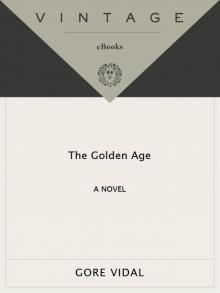 The Golden Age: A Novel
The Golden Age: A Novel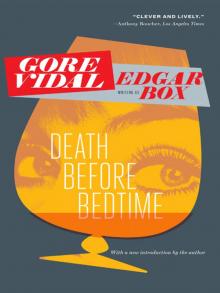 Death Before Bedtime
Death Before Bedtime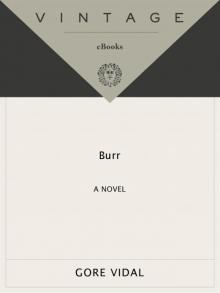 Burr
Burr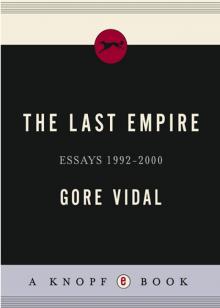 The Last Empire
The Last Empire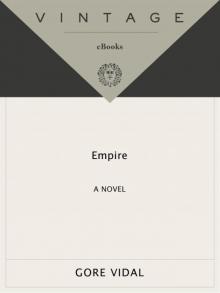 Empire: A Novel
Empire: A Novel The Selected Essays of Gore Vidal
The Selected Essays of Gore Vidal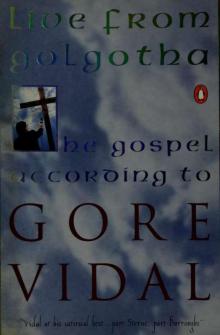 Live From Golgotha
Live From Golgotha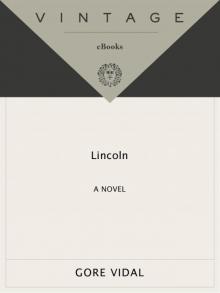 Lincoln
Lincoln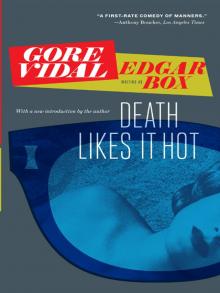 Death Likes It Hot
Death Likes It Hot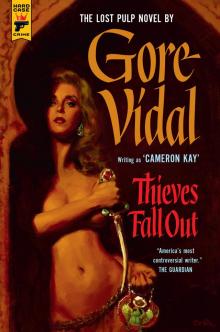 Thieves Fall Out (Hard Case Crime)
Thieves Fall Out (Hard Case Crime)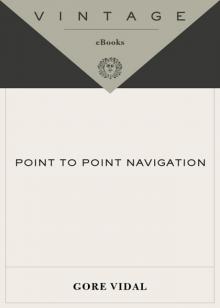 Point to Point Navigation
Point to Point Navigation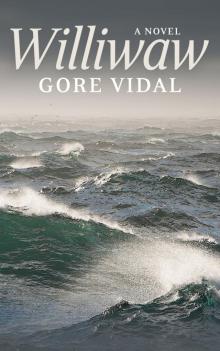 Williwaw
Williwaw Death in the Fifth Position
Death in the Fifth Position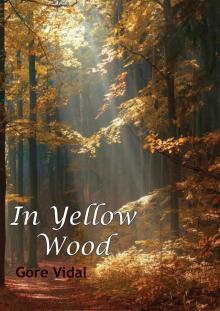 In a Yellow Wood
In a Yellow Wood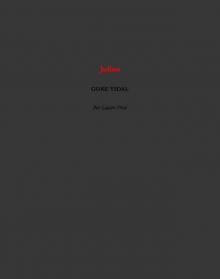 Julian
Julian Hollywood
Hollywood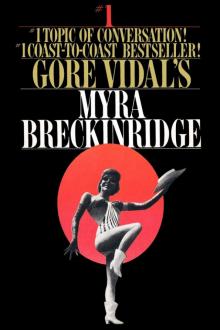 Myra Breckinridge
Myra Breckinridge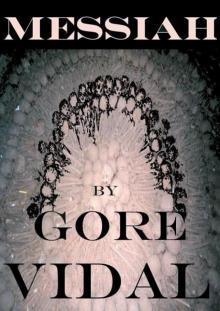 Messiah
Messiah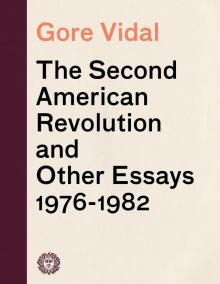 The Second American Revolution and Other Essays 1976--1982
The Second American Revolution and Other Essays 1976--1982 Homage to Daniel Shays
Homage to Daniel Shays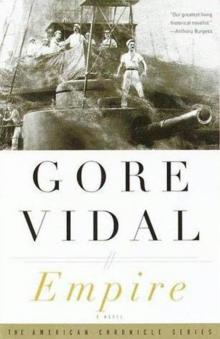 Empire
Empire Thieves Fall Out
Thieves Fall Out 1876
1876 The City and the Pillar
The City and the Pillar The Golden Age
The Golden Age At Home
At Home